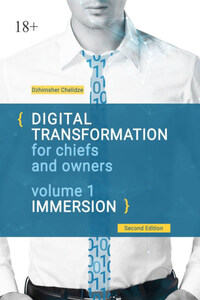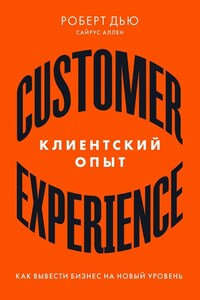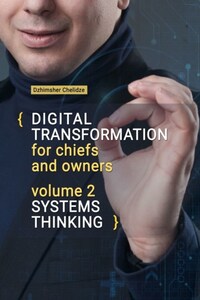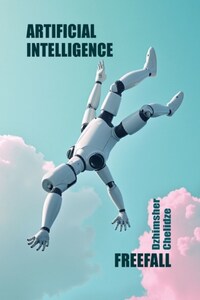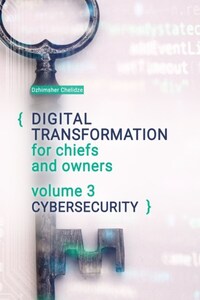Greetings, dear reader! My name is Jimsher. My managerial experience accounts for more than 10 years, 8 of which have taken place at the interface of IT and production. Additionally, I possess experience in crisis management. I myself have stuffed a large number of bumps and went through a large number of problems and conflicts. I had to face situations of layoffs.
If you’re reading this book, you’ve probably already heard of digitalization, digital transformation, and maybe even got lost and now you want to figure out what it is and how it can be applied in business.
My main occupation is to get the owners between Scylla and Charybdis to build control systems and to do digital transformations. And this book will help you get to know the world better.
What is the difference between this book and others? The fact that technology is not central here. Of course, we’re going to go through the theory, we’re going to get to know the basic technologies and systems, but it’s also going to include real stories and my personal experience, and we’re going to look at the causes of most of the problems, and we’re going to look at how to work with the changes that the state is preparing for us, and here ESG and how to start implementing the figure in small steps with the maximum result.
This book is written primarily for industrial executives and entrepreneurs who are at a crossroads and are tormented by the questions: Do we start digitalizing and digitalizing? And if we start, how? What people are needed, how not to lose your team and money? How long will this process take? What are the risks and pitfalls here? What will it lead to? What technologies make sense to use? What will happen if you don’t do it?»
In my experience, these are the people that ultimately determine success. However, they are also the main cause of failure or problems: inflated expectations and impatience, the wrong team, insufficient resources or their dispersion, the faith of «storytellers».
It’s also a curiosity book. However, it is contraindicated to specialists in IT, automation and anyone who likes «accurate and large-scale research with scientific confirmation of each thesis». It’ll probably give people like that heartburn.
I really hope I was able to find a balance between abstraction and immersion. Without basic technical training it is very difficult to manage «technicians»: managers need to understand what their specialists say, and specialists are interested in their managers. And this book will serve as a bridge between TOP and technicians.
For the most impatient, I will say at once that digitalization and digital transformation are a long process. On average, it takes 2—3 years, and in large companies – about 5 years. Why so much? Because, first of all, it’s not about technology, but about people, processes and internal culture.
Everything must be ready for radical changes but the main thing – top managers, because they will have to solve a huge number of conflicts. Additionally, if you’re not ready, you should stay on the beach and just have fun, save money for a prosperous old age. It is impossible to change others, but to remain the same. It will be profanation. This is also one of the key tools of management – system restriction theory. It is often the leaders and their thinking that become the constraints of their companies and divisions.
A large number of people are talking, and I think it’s reasonable, about the Fourth Industrial Revolution, which is a radical change of attitude.
As a reminder:
– 1st Revolution – the invention of the machine, the avoidance of manual labor;
– 2nd revolution – the invention of the conveyor, radical increase in productivity;
– 3rd Revolution – the emergence of the Internet, mobile communication, the spread of computers;
– 4th Revolution – the use of end-to-end digital technology and robotics.
However, any revolution is either an opportunity to take things to the next level or a risk to lose everything.
Working with people in different industries, I learned one simple thing: few people understand digitalization and digital transformation. For some, it is something strange and complicated, for others – renamed automation.
Having studied many requests of companies, including on portals on search of employees, I have repeatedly seen it. Most simply want to attract those who will introduce the next 1C, production planning system or financial management. So basically, we’re talking about good automation machines, which are called digital transformation managers (CDTs, CDOs), IT business partners.
This book is the result of a huge amount of pain experienced and mistakes passed. Not only my own, but also colleagues from different industries and companies – all those with whom I communicated. Its purpose is to «dispel the fog», immerse you in the world of numbers with the help of human language, to show how it works, to help avoid expensive mistakes, loss of time and disappointments.
